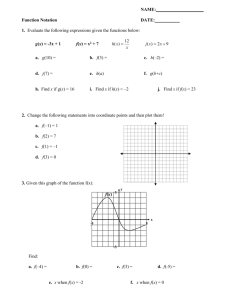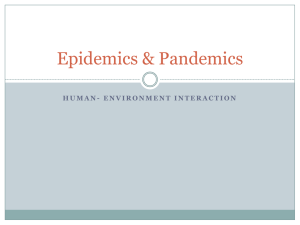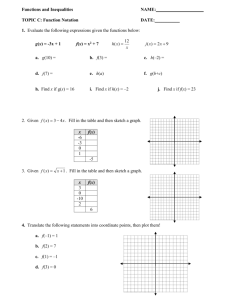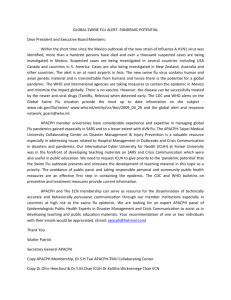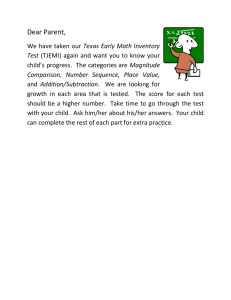Swine Flu and School Closures By Craig A. Conway, J.D., LL.M.
advertisement
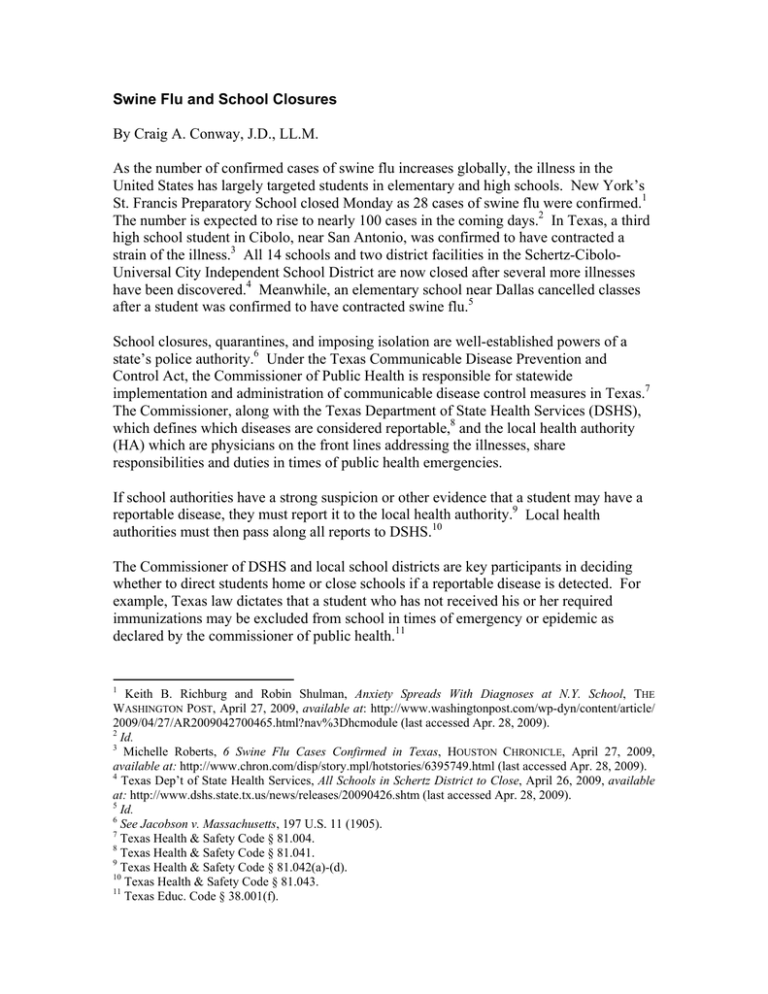
Swine Flu and School Closures By Craig A. Conway, J.D., LL.M. As the number of confirmed cases of swine flu increases globally, the illness in the United States has largely targeted students in elementary and high schools. New York’s St. Francis Preparatory School closed Monday as 28 cases of swine flu were confirmed.1 The number is expected to rise to nearly 100 cases in the coming days.2 In Texas, a third high school student in Cibolo, near San Antonio, was confirmed to have contracted a strain of the illness.3 All 14 schools and two district facilities in the Schertz-CiboloUniversal City Independent School District are now closed after several more illnesses have been discovered.4 Meanwhile, an elementary school near Dallas cancelled classes after a student was confirmed to have contracted swine flu.5 School closures, quarantines, and imposing isolation are well-established powers of a state’s police authority.6 Under the Texas Communicable Disease Prevention and Control Act, the Commissioner of Public Health is responsible for statewide implementation and administration of communicable disease control measures in Texas.7 The Commissioner, along with the Texas Department of State Health Services (DSHS), which defines which diseases are considered reportable,8 and the local health authority (HA) which are physicians on the front lines addressing the illnesses, share responsibilities and duties in times of public health emergencies. If school authorities have a strong suspicion or other evidence that a student may have a reportable disease, they must report it to the local health authority.9 Local health authorities must then pass along all reports to DSHS.10 The Commissioner of DSHS and local school districts are key participants in deciding whether to direct students home or close schools if a reportable disease is detected. For example, Texas law dictates that a student who has not received his or her required immunizations may be excluded from school in times of emergency or epidemic as declared by the commissioner of public health.11 1 Keith B. Richburg and Robin Shulman, Anxiety Spreads With Diagnoses at N.Y. School, THE WASHINGTON POST, April 27, 2009, available at: http://www.washingtonpost.com/wp-dyn/content/article/ 2009/04/27/AR2009042700465.html?nav%3Dhcmodule (last accessed Apr. 28, 2009). 2 Id. 3 Michelle Roberts, 6 Swine Flu Cases Confirmed in Texas, HOUSTON CHRONICLE, April 27, 2009, available at: http://www.chron.com/disp/story.mpl/hotstories/6395749.html (last accessed Apr. 28, 2009). 4 Texas Dep’t of State Health Services, All Schools in Schertz District to Close, April 26, 2009, available at: http://www.dshs.state.tx.us/news/releases/20090426.shtm (last accessed Apr. 28, 2009). 5 Id. 6 See Jacobson v. Massachusetts, 197 U.S. 11 (1905). 7 Texas Health & Safety Code § 81.004. 8 Texas Health & Safety Code § 81.041. 9 Texas Health & Safety Code § 81.042(a)-(d). 10 Texas Health & Safety Code § 81.043. 11 Texas Educ. Code § 38.001(f). The most recent possible pandemic illness, swine flu, will likely produce more cases of the illness in schools nationwide. School districts and state health authorities should have clear plans and procedures in place to address the flu-like symptoms students may exhibit. However, such clarity likely does not exist consistently from county to county in each state. The Texas Education Agency (TEA) released a memorandum on April 27, 2009, to all state school districts informing superintendents how best to handle students with “flu-like symptoms.”12 Specifically the agency noted: [p]ublic schools should prudently evaluate the health of current students and new arrivals. Students demonstrating flu-like symptoms should be evaluated by medical professionals. Please be aware that merely sneezing or coughing without a fever or other symptoms of the flu does not require intervention. Many students will merely have seasonal allergies or asthma and do not pose a threat. Similarly, students arriving from outside of the state or country should be admitted to school in the normal manner. There is no basis at this time for excluding students who have arrived from Mexico or other locations where the swine flu has been diagnosed.13 During a somewhat similar influenza outbreak in 2006-2007, federal, state and local officials reviewed emergency measures to curb the spread of the illness, including school closure, cancellation of classes or dismissal of students.14 Research indicated that closing schools could possibly reduce the incidence rate of infection among children by 90 percent or more.15 Additionally, the Centers for Disease Control (CDC) and other health organizations have advocated that communitywide school closures may significant mitigate the impact of pandemic influenza on the public’s health and economy.16 Thus, the CDC, consistent with World Health Organization guidance, has recommended national school closures for possibly up to three months during an outbreak of pandemic influenza.17 However, such a lengthy closure timeframe is premised on the existence of legal authority to do so. Long-term school closures implicate an array of legal issues concerning (1) the authority of state departments of health and education agencies to close schools; (2) the level of 12 Texas Educ. Agency, TEA Correspondence re: Swine (North America) Flu Information, April 27, 2009, available at: http://ritter.tea.state.tx.us/taa/comm042709.htm (last accessed Apr. 28, 2009). 13 Id. 14 School Closure in Response to Disease Outbreaks, 78:2 J. OF SCHOOL HEALTH 110 (Feb. 2008). 15 Id. at 111. 16 James G. Hodge, Jr., The Legal Landscape for School Closures in Response to Pandemic Flu or Other Public Health Threats, 7:1 BIOSECURITY AND BIOTERRORISM: BIODEFENSE STRATEGY, PRACTICE, AND SCIENCE 46 (March 2009). 17 Id. (citing U.S. Centers for Disease Control and Prevention, Interim Pre-pandemic Planning Guidance: Community Strategy for Pandemic Influenza Mitigation in the United States, available at: http://www.pandemicflu.gov/plan/community/community_mitigation.pdf (last accessed Apr. 28, 2009)). government (state or local) empowered to close schools; and (3) how to resolve potential conflicts in decision making among multiple key players.18 A 2007 study by the Centers for Law & the Public’s Health reviewed states’ legal authorities for closing schools during public health emergencies and found a disturbing lack of clarity regarding which state agency or agencies were responsible for closing schools or when they could or should be legally closed.19 For example, state or local health agencies or school districts may not agree on the appropriate timing of a school closing or subsequent reopening.20 Closing schools for extended periods of time can create a significant economic impact, social disarray, educational disadvantages to students, and other issues.21 The United States Department of Health and Human Services’ checklist regarding school closures conveys conflicting messages regarding what to do during an outbreak of pandemic influenza.22 It recommends that schools remain open during a pandemic and develop school-based surveillance systems for absenteeism of students and personnel; however, it also vaguely recommends developing alternate procedures to ensure the continuity of instruction in the event of district-wide school closures.23 Determining when to close schools in response to a public health emergency is a difficult task. Whether at the state or local level, various health and education agencies have different goals, missions, and objectives that may significantly affect their decision to close schools. Unless clear guidance and consistent checklists are put forth regarding proper procedures in times of pandemic flu-like illness, it is likely that each state school district will handle matters a little bit differently. Health Law Perspectives (April 2009), available at: http://www.law.uh.edu/healthlaw/perspectives/homepage.asp 18 Id. School Closure in Response to Disease Outbreaks, 78:2 J. OF SCHOOL HEALTH 111 (Feb. 2008). 20 Id. 21 See Hodge, supra note 16 at 48. 22 See Laura H. Kahn, Pandemic Influenza School Closure Policies, 13:2 CDC Emerging Infectious Diseases, February 2007, available at: http://www.cdc.gov/eid/content/13/2/344.htm (last accessed Apr. 28, 2009). 23 Id. 19
